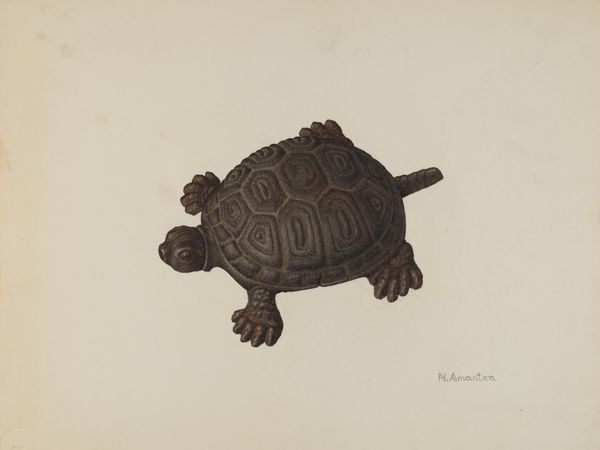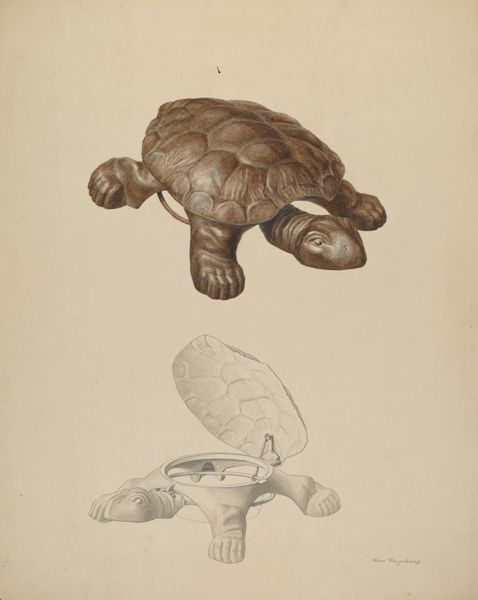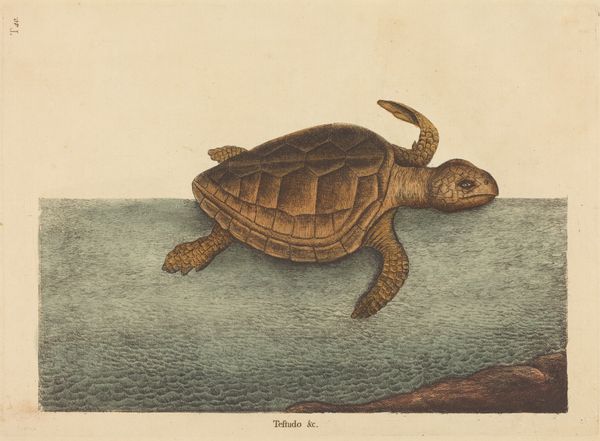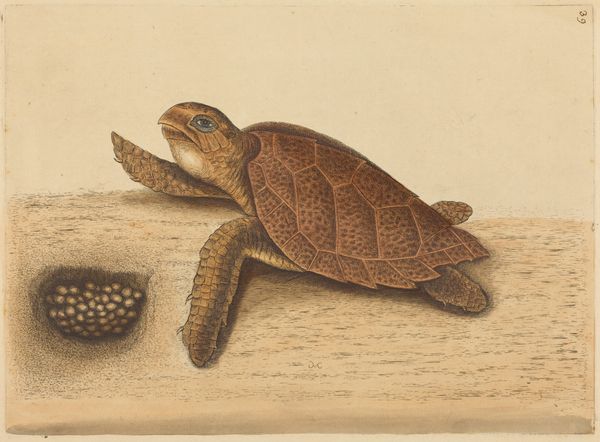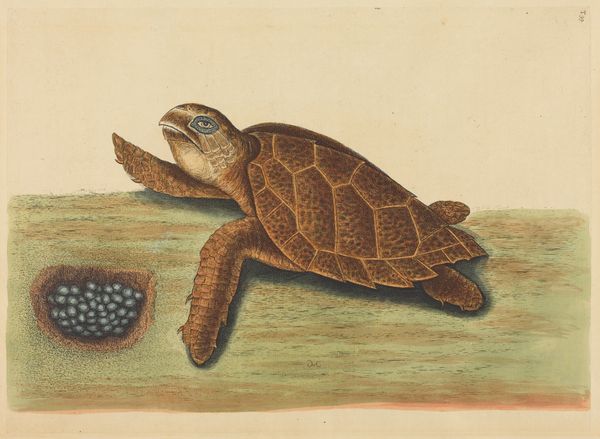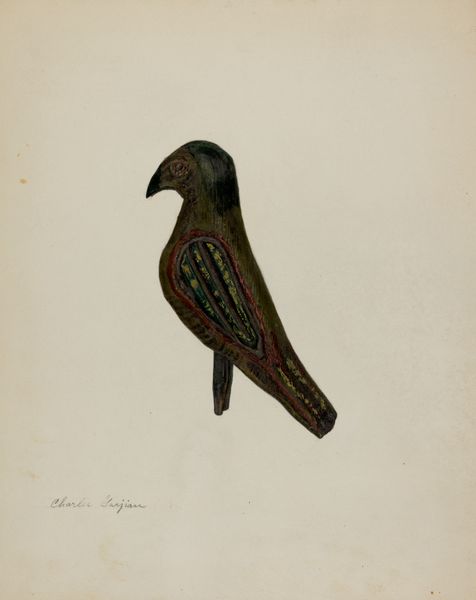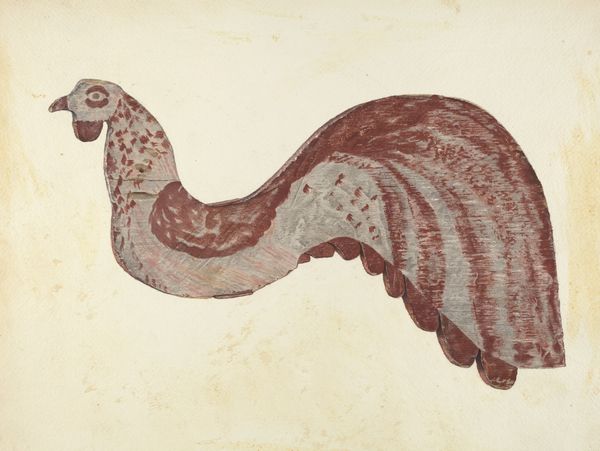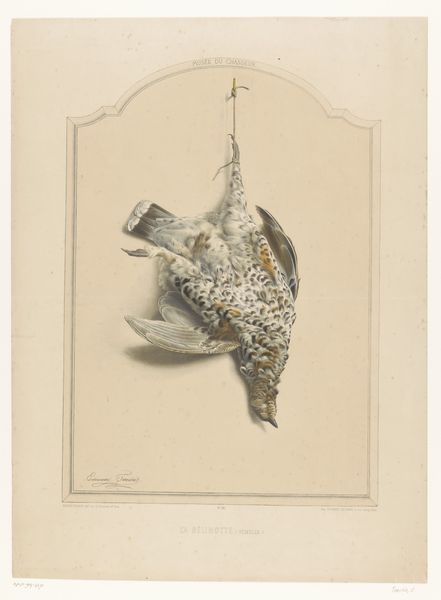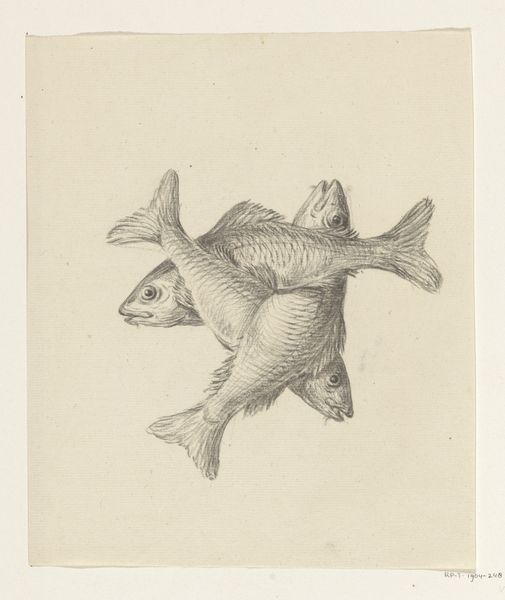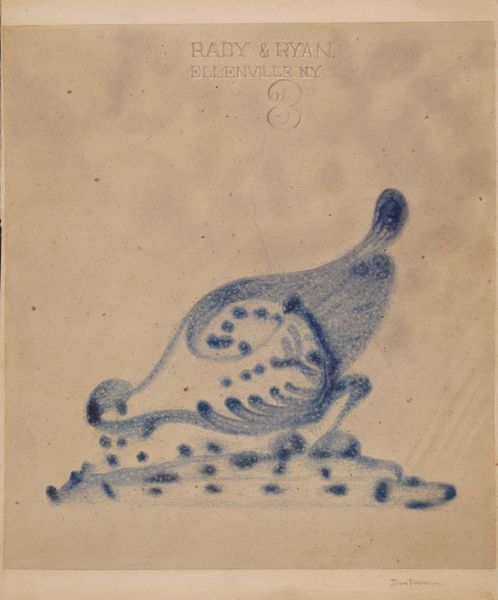
drawing, watercolor
#
drawing
#
watercolor
#
folk-art
#
watercolour illustration
#
watercolor
Dimensions: overall: 28.8 x 22.4 cm (11 5/16 x 8 13/16 in.) Original IAD Object: 4 3/4" long; 5" high
Copyright: National Gallery of Art: CC0 1.0
Curator: The piece we’re looking at is "Pa. German Toy Turkey," a watercolor drawing from around 1940 by Selma Sandler. It’s charming, isn’t it? Editor: It does have a certain unassuming folksiness to it. There’s a deliberate clunkiness in how it's rendered. One almost gets the impression of a hand-carved object translated into a painted image. Curator: Yes, precisely! It reflects the rich tradition of Pennsylvania German folk art, where utility and aesthetics were intertwined. We can consider the historical context of folk art as a cultural expression that served as a response and commentary to dominant social and artistic structures of its time. What aspects of labor are visible here? Editor: Well, you can really sense the labor, but it's an illusion! We know it’s a watercolor, but the application of color and form creates that powerful illusion of carved wood. There is also that sense of careful detail--I think we can relate that process to similar crafting practices across multiple diasporas and immigrant experiences. What does it signal? Curator: The turkey as an accessible art subject, maybe. These weren't high-art icons being portrayed; it’s a creature central to the community, both as food and perhaps symbolically. These artworks could act as silent protest and resistance. The folk imagery could be understood as coded visual statements on class. Editor: I see your point. The material itself—watercolor on paper—speaks to a certain accessibility as well, both in its production and consumption. There's no grand, laborious bronze casting here, or the carving of marble! It's about using what's available. In using common resources, the artist can imbue a special reverence onto mundane activities of life. What kind of connections do you observe in terms of material usage? Curator: Thinking about it now, Selma Sandler is also reflecting a specifically female lineage within art making practices, specifically in crafting and applied design. Weaving, embroidery, cooking—folk art was often tied to women’s domestic labor, but it holds profound political implications. Editor: That is something this piece captures really well—this relationship of labor and accessibility as central tenants of cultural memory, which is then further amplified by these images. The artist has managed to really embed the importance of that idea through these textures. Curator: Definitely food for thought on the politics embedded in art of common materials. Editor: It shows the beauty inherent in the materials and process of labor, absolutely!
Comments
No comments
Be the first to comment and join the conversation on the ultimate creative platform.
